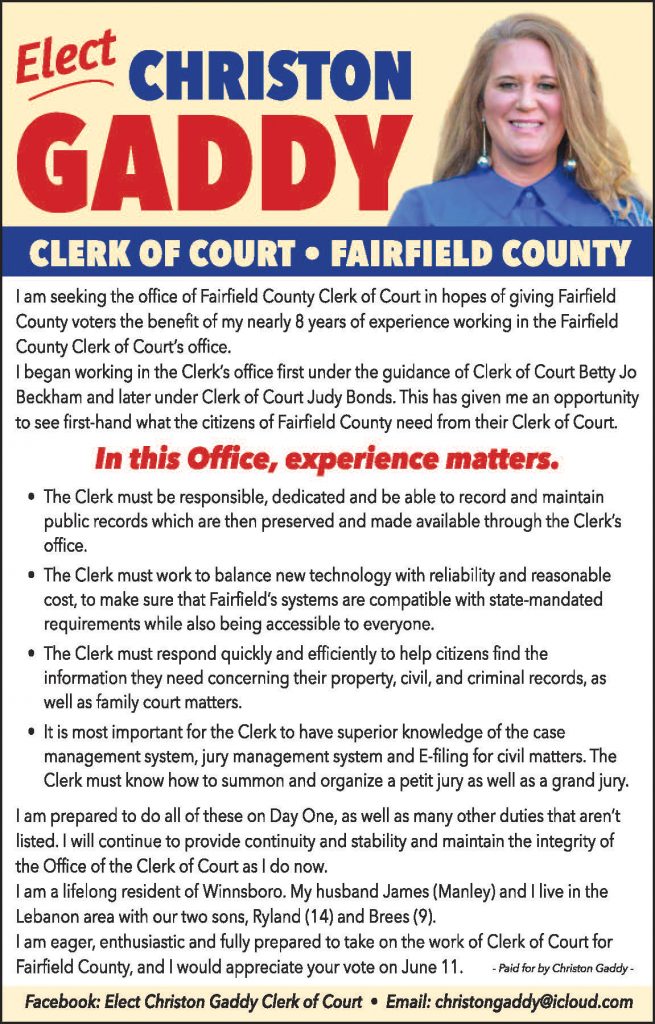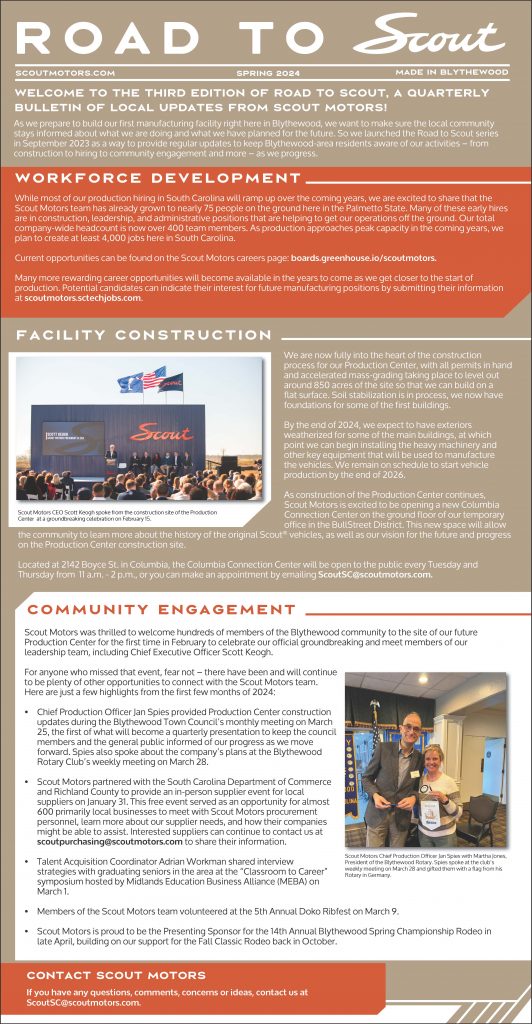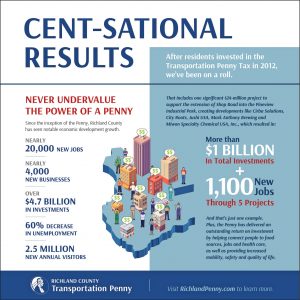WINNSBORO – The Voice has received several letters from readers in regard to the penny tax and the wastewater treatment plant who ask the same questions. We have asked Ty Davenport, Fairfield County Director of Economic Development to answer questions from one of those letters – this one sent in by reader Kirk Thurston.
Thurston: A penny-per-dollar sales tax, on the ballot this November, is a regressive flat tax that puts a heavy burden on low-income families.
Ty Davenport: A penny sales tax only affects those who choose to make purchases whereas a property tax affects all residents, i.e. property owners, landlords to renters, and commercial businesses to customers. In the case of the penny sales tax, much of the burden will be from non-Fairfield County residents. 43 of the 46 counties in South Carolina have a penny sales tax in place. Therefore, if you are traveling outside of the county you are more than likely paying a penny sales tax.
Thurston: Do we know what happened to the $24 million the County borrowed in 2013 that we are still paying for to the tune of $43 million (in interest and principle)?
Davenport: The allocations were as follows:
- Element Electronics (4/2014 – 2/2015) $582,776.77
- Mega Site Acquisition $1,800,000
- Medical Building Purchase $800,000
- Phase II Commerce Center (6/2013-6/2019) $7,827,680.33
- Phase I Commerce Center Water and Sewer (6/2013-6/2015) $156,391.90
- Regional Park – District 1 (5/2014-3/2018) $126,530.21
- Regional Park – District 2 (5/2014 – 6/2017) $944,963.91
- Regional Park – District 3 (10/2013 – 12/2016) $91,741.54
- Regional Park – District 4 (5/2014 – 6/2017 $859,717.24
- Regional Park – District 5 (5/2014 – 11/2016) $50,884.29
- Regional Park – District 6 (5/2014 – 4/2017) $154,191.99
- Regional Park – District 7 (5/2014 – 6/2015) $55,811.78
- Drawdy Park (6/2013 – 10/2013) $112,525.00
- Courthouse Improvements (6/2013 – Present) $262,362.77
- Administration Building (6/2013 – 1/2018) $1,133,743.03
- Firestation Upgrade (6/2015 – 6/2017) $2,640,629.42
- Communication Upgrade (6/2015 – 7/2018) $885,906.01
- Detention Center Security Upgrade (6/2016) $200,000
Thurston: Why is it acceptable for the people of Fairfield to be asked to fund this expensive sewage plant when there are alternatives that will work?
Davenport: We’ve reviewed multiple alternatives. This is the most practical and economical solution. A broad river facility is nearly twice the cost of the current facility. Connecting to the City of Columbia is even more expensive than building a new waste water treatment plant, plus it creates no new capacity. The costs are enormous – connection lines ($$$) and the impact fee to connect to the system ($32 million), plus the costs for out of town rates which will diminish the attractiveness of the County to new industry.
Thurston: Fairfield County paid a top-notch engineering firm, Hazen & Sawyer, an enormous amount of money for an intensive study of our water and sewer needs. In its 2015 fifty year plan, Hazen & Sawyer advised that sewage from industrial development in the eastern part of the county should be piped to existing services provided through the City of Columbia; they did NOT suggest construction of a plant.
The Hazen & Sawyer Report recommended that a wastewater treatment plant be placed in the western part of the county along the Broad River where it would better serve the needs of residents and industry.
Davenport: That would require a 25-mile collection line at a cost of $37.5 Million plus the cost of the plant itself $32 Million.
Thurston: In The Voice article, county officials bemoaned having only 30,000 gallons per day of sewer capacity available. The Town of Winnsboro has an available capacity of 287,000 gallons per day, and capacity from closed industries would contribute another 255,000 gallons per day.
Davenport: Officials have said there is only 34,000 gpd available at the mega site, Fairfield Commerce Center, Exits 32 and 34. The existing collection lines and pump stations are inadequate, undersized, out dated and in need of upgrading. In order for the growth areas to access Winnsboro’s excess capacity, we would have to spend $10M-$12M on collection lines. In other words, $24 per gallon while adding zero capacity to the system. Conservatively, we can build a plant to initially handle 2 mgd and easily and expand to 4 mgd for $8-16 per gallon. Economically, it makes no sense to spend $12M to upgrade sewer collection lines and not create any new sewer capacity.
Additionally, the Winnsboro system is currently near 80% capacity. When your system hits 80%, DHEC requires you to begin design for additional capacity. At 90% utilization, DHEC wants you to actually begin adding capacity. The Winnsboro engineers did identify 255,000 gpd that can be potentially “reclaimed” DHEC has not yet signed off on this request. Until they do, there is only 287,000 gpd available. The new plant will add the needed capacity to the system and will not require collection line upgrades.
Thurston: In addition to the Winnsboro capacity, the County spent some $517,000 in 2018 for an agreement with Great Falls for another 250,000 gpd of sewer capacity, bringing its total available capacity from Winnsboro and Great Falls to nearly 800,000 gallons per day (Winnsboro, 287,000 and 255,000 plus Great Falls 250,000.) Would it not be financially prudent to maximize use of existing resources before building a new plant?
Davenport: The county did pay Great Falls $500,000 to make repairs to their pump stations and collection lines that serve users along Hwy 200 and Exit 48. The County also owns industrial property near Exit 48 that will hopefully utilize this capacity at some point. In order to access the reserved 250,000 gpd in the growth areas, we would have to run collection lines 20 miles at a cost of $30 million which is the approximate cost of a new sewer plant that adds 2M-4M gpd of capacity. Again, not a prudent use of funds.
Thurston: Since the proposed plant would benefit industry almost exclusively, why shouldn’t industry fund it?
Davenport: Industry will pay impact fees which will help pay back the county over time. New industry wouldn’t consider looking at Fairfield County without proper infrastructure in place while existing industry could be forced to look elsewhere because of the sheer costs.
Thurston: The County could build the plant on the Megasite, which is the primary expected source of the waste, and then the effluent could be recycled within the hoped-for industry’s processes or other uses.
Davenport: The waste water treatment plant is not being built purely for the Megasite. It will be used for serving the Fairfield Commerce Center, Walter B. Brown Industrial Park, along with future residential and commercial developments on I-77 and across the county. It gives the county potential for recruiting new industry and providing the services that so many want for residential neighborhoods and commercial uses.












